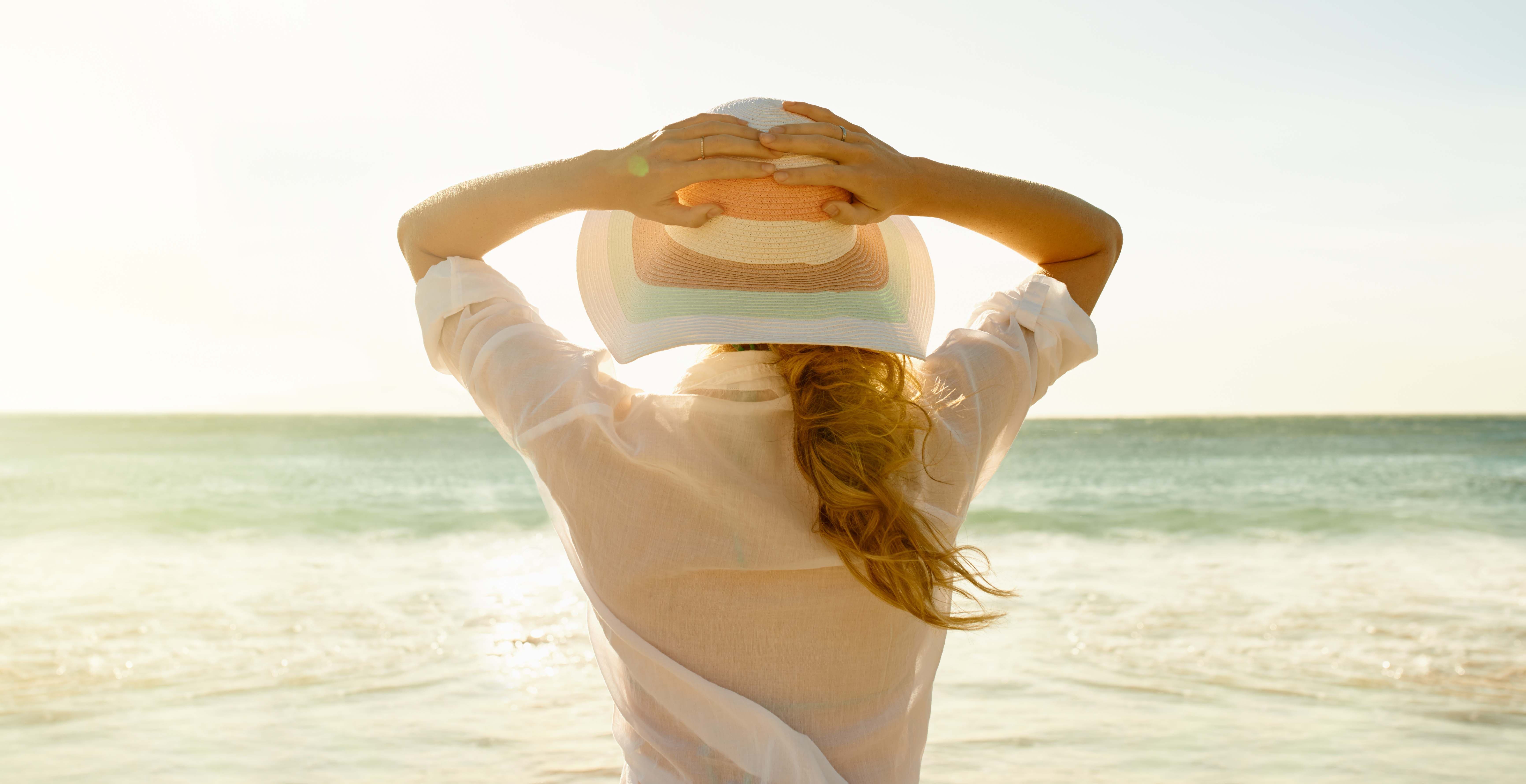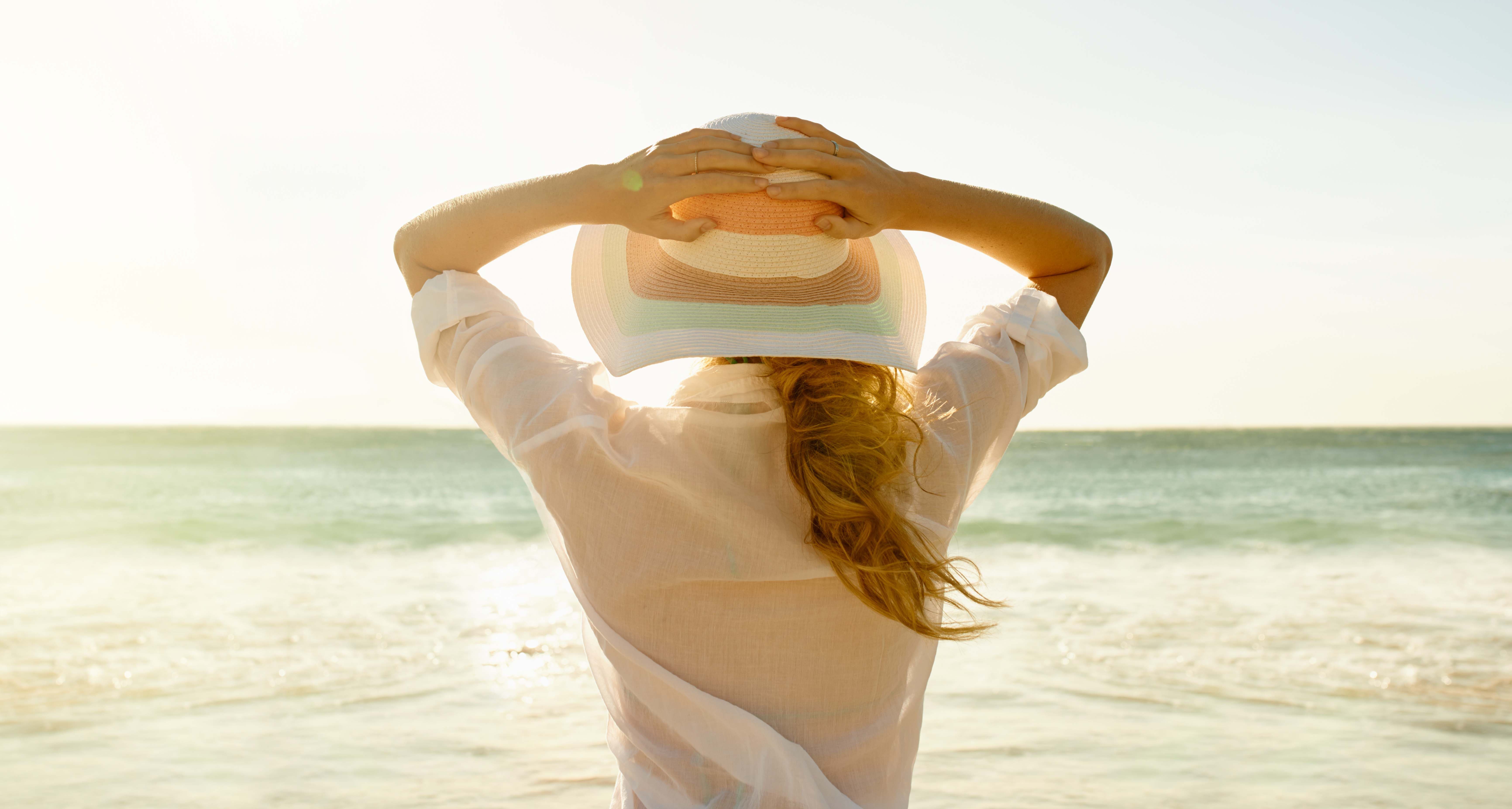Sun Care 101


Summer is finally upon us! And of course summer equals sun, and while we love and crave the sunshine, we do have to remember that it can be damaging, and we have to take precautions. It’s easy to forget to put on sunscreen – let alone reapply it – or to think we don’t need to wear a hat today, so here’s a friendly reminder of why sun care is so important, and what it all entails.
Dermatologist Dr. Benjamin Barankin, who is also the medical director and founder of the Toronto Dermatology Centre, says sun protection is the number one thing you can do to prevent skin cancer – and to age more gracefully.
“Skin cancers are on the rise,” Dr. Barankin says. This includes melanoma, which can be fatal.
Indeed, according to the Canadian Cancer Society, incidence rates of melanoma have been increasing over the past several decades in both women and men. Specifically, between 2001 and 2010 there was an increase of 2.4 per cent per year in men and, between 2004 and 2010, a rise of 2.8 per cent a year in women.
According to Dr. Barankin, sun exposure is linked to:
- Skin cancer
- Sunburns
- Sallow, dehydrated skin
- Sun or liver spots
- More freckles
- More and larger moles
- Uneven skin tone
- Increased proneness to cold sores
Here’s what you need to know to protect yourself:
Good Sun Habits
- Wear SPF 30 high-quality sunscreen every morning, regardless of the weather, and reapply every two to three hours when out and about.
- Wear hats, ideally wide-brim: A baseball cap, for example, doesn't cover the ears and nose, which are very high-risk areas for skin cancer, Dr. Barankin says.
- Wear sunglasses.
- Wear sun-protective clothing.
-
Minimize midday sun exposure – the best times to be in the sun are before 10 a.m. and after 4 p.m.
Now, despite our best efforts, sometimes those powerful rays get through and we end up with sunburn. Here’s how Dr. Barankin recommends you take care of one:
- Moisturize
- Hydrate – drink your water, of course, but also minimize your alcohol and caffeine intake
- Apply cool compresses
- Take ibuprofen to help with the pain if needed
- Minimize, or ideally avoid, sun exposure for at least two weeks after a burn
The 411 on freckles and moles
When we talk about sun care, there’s often mention of freckles and moles in a negative way, and that can start to sound scary and confusing. So we asked Dr. Barankin, what’s normal, and when should we see a dermatologist?
“The more freckly you are, the more likely you are to have a fair skin type and light eyes, and be more prone to sunburns and skin cancer,” he says. “If you’re over 50 or have had skin cancer or a family history of it, or went to tanning salons, likely yearly review by a dermatologist is a good idea,” Dr. Barankin adds.
As for moles, it’s important to keep an eye on them.
“Learn your ABCDEs,” Dr. Barankin says.
Asymmetry
Border irregularity
Colour variegation (multiple colours or pitch black)
Diameter 6 millimetres or greater
Evolution or change in a mole
“If you have any of these features, especially if two or more, [it’s] best to have a dermatologist review the mole,” Dr. Barankin says. “The ugly duckling sign is particularly useful,” he adds. “If a mole or lesion doesn’t look like the others, [for example if it’s] much darker or bigger than nearby moles, then have it checked out.”
And it’s important to remember that no one is immune to skin cancer – so we all need to protect ourselves, regardless of our ethnicity.
“Darker skin tones are less prone to skin cancer,” Dr. Barankin explains, “but because we’re not expecting it as often [in people with dark skin], it is often picked up much later and the outcomes are not as good.” People with dark skin are also much less likely to get sunburn, he explains, though they are not immune to it. Everyone should wear sunscreen properly and a hat and/or sunglasses, Dr. Barankin says.
Now does all this sun protection contradict what we’re told about letting our skin soak up some rays so our bodies can produce that all-important vitamin D? Dr. Barankin explains:
“Generally, Canadians are deficient in vitamin D … since most people don’t put on enough sunscreen and don’t reapply it often enough, in the summertime there is no difficulty getting sufficient sun and vitamin D.” He also recommends taking a vitamin D supplement.
“In our practice, there is no question that skin cancer is on the rise,” Dr. Barankin says. “Thankfully, there also is more awareness, and so often it’s picked up earlier.”
Dr. Barankin also notes that women tend to come in with smaller or earlier-stage skin cancers than men – so make sure you are having those regular checkups. Stay safe out there, and enjoy your summer!
